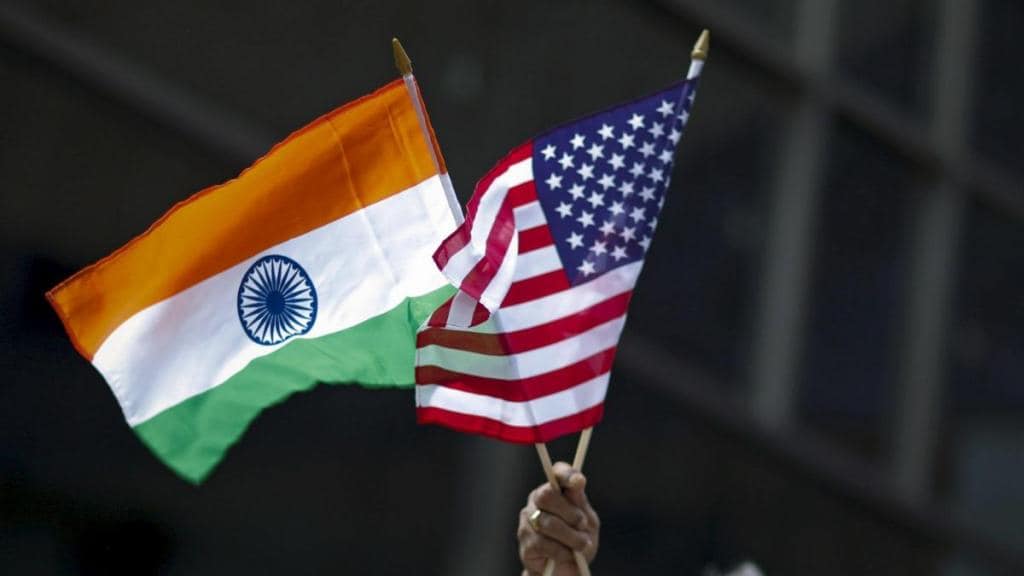US president Donald Trump’s tariff policy has caused a lot of countries to think more carefully about how they can create autonomous growth pillars, drawing on their comparative advantages, said Sean Michael Dougherty, Senior Adviser at Organisation for Economic Co-Operation and Development (OECD). India should push AI in health and education to improve service delivery with reduced costs, he told Prasanta Sahu. Dougherty was in New Delhi to attend the Kautilya Economic Conclave. Edited excerpts.
How are the US tariff policies going to impact the world economy, trade, and, in particular, India?
We’ve always promoted fair and open trade; however, our global economic forecast reveals some significant uncertainties related to trade policy. So far, the initial adjustments have been, in some ways, better than expected, but there are a lot of risks on the horizon. Let’s say some of the effects may come in a delayed way. The latest forecast for the US in particular isn’t especially strong. We have around 1.5% growth for this year and next, coming down from a stronger growth forecast earlier in 2025.
The growth prospects for India still look good, despite US trade policies being a major concern. We have roughly 6.5% growth expected for India both in the current year and the next. A lot of things are in place, despite the trade tensions, and it’s encouraging. I would say there is a strong focus here in India on the key challenges about the future, around Asian integration, and about creating trade zones of like-minded countries. We could see this clearly at the Kautilya Economic Conclave this weekend.
Do you think Trump’s America First policy is sustainable for his country, and the world at large?
I think it’s caused a lot of countries to think more carefully about how they can create autonomous growth pillars. India has a very strong demographic base and a lot of advantages in this quite challenging time. We see artificial intelligence (AI) bringing a wave of new opportunities, economic opportunities. Continued structural reforms are becoming even more important. India has a major need to increase female labour force participation. And AI is both a kind of hammer and a wand. It’s going to force changes in how we think about the future and about what the growth pillars are, but at the same time, it creates an accelerator, strengthening the capacity of people across different parts of the labour force to be more productive and to increase their incomes.
What is the potential you see for AI in India?
I think we see a lot of good potential. You don’t necessarily need to have your own AI models to be on the right track. Same is the case with Europe. We have some good AI models like Mistral in France, that are arguably safer than some elsewhere. But I think that the real opportunity here is not on the model training side, it’s on the adoption side. Probably the biggest public sector opportunities are in health and education. Even if we are only able to automate the routine tasks, the back-office ones, for the administrative parts, like writing up notes, billing, and scheduling, this could save, in some cases, as much as 25% of costs and focus more on the delivery of, say, good quality healthcare augmented by AI. I think that’s a great opportunity for a country like India. We need to think more about how to facilitate adoption in organisations, public, and private, and accelerate good individual use, particularly through the education system.
Does India still have a prospect of being a manufacturing hub, given the current global realignment of supply chains?
I think that’s an important opportunity, and geopolitics has pushed in that direction. While the current tariffs from the US probably are not helpful, maybe that’ll get resolved soon. I know there are efforts underway on both sides.
Aside from that, the supply chains are often intermediary trading partners in any case, and here India can probably draw on its comparative advantages, often in services, in organisational logistics, and in workers’ fluency in English. In India, there’s a long legacy of disfavouring manufacturing and overregulating it. The government is trying to address those issues. I think giving more opportunities to states to experiment is also really important.
Are you satisfied with India’s policy on fiscal consolidation and its commitment?
The world economies after COVID are under tremendous fiscal pressure. Debt has increased dramatically, including in India. In an international context, India is in a better position, and with its strong growth prospects, I think it’s well-placed to manage it effectively. There are problems at the state level, but those are continual issues that need to be addressed through good fiscal policy. In particular, the 16th Finance Commission can play a constructive role in promoting the right incentives.


